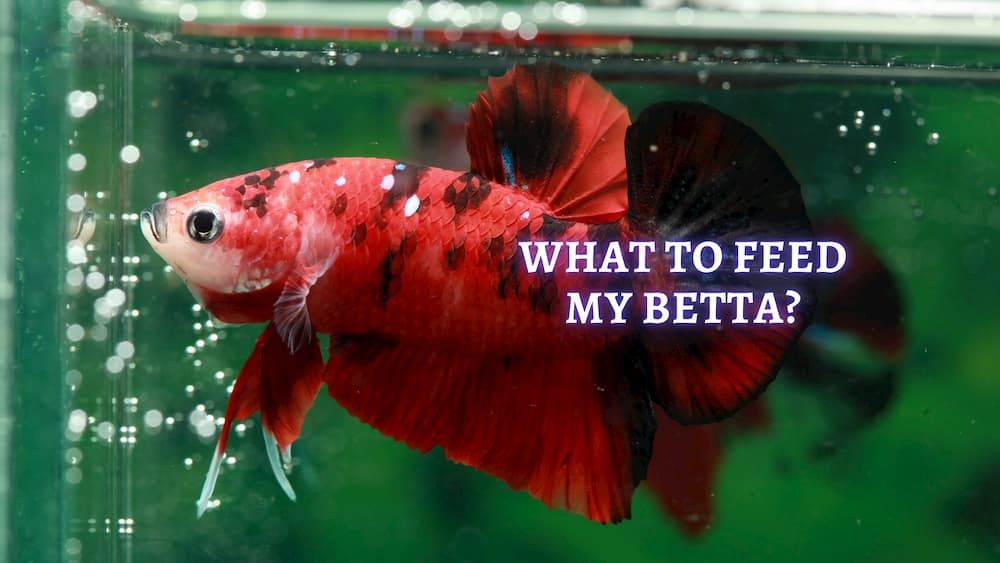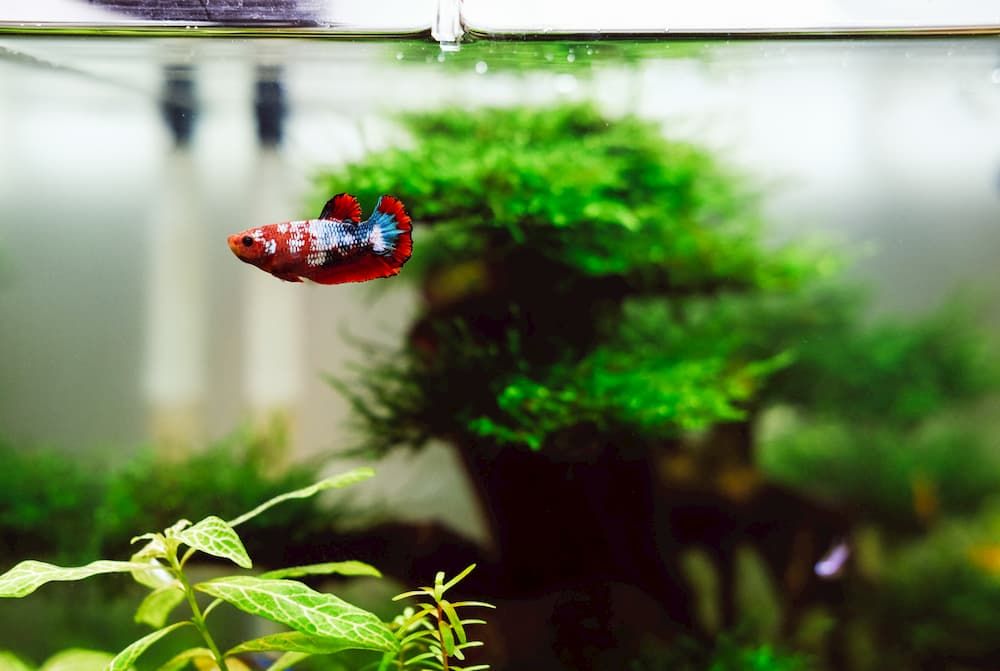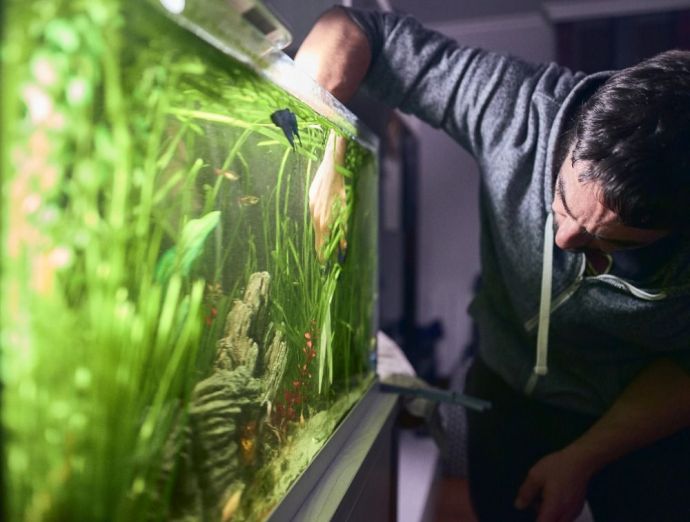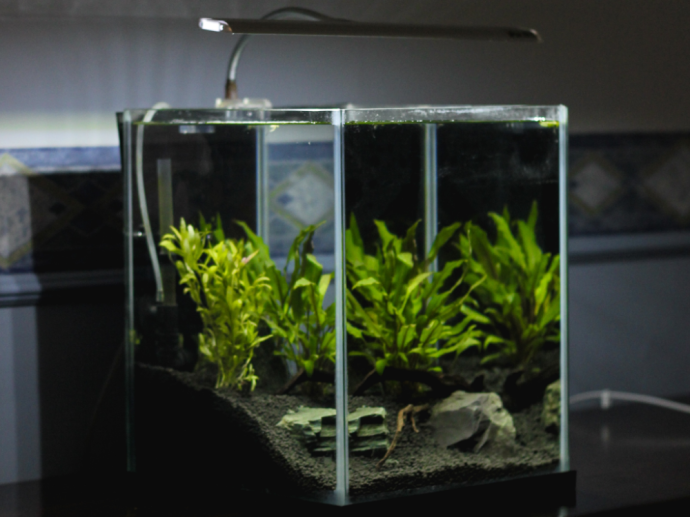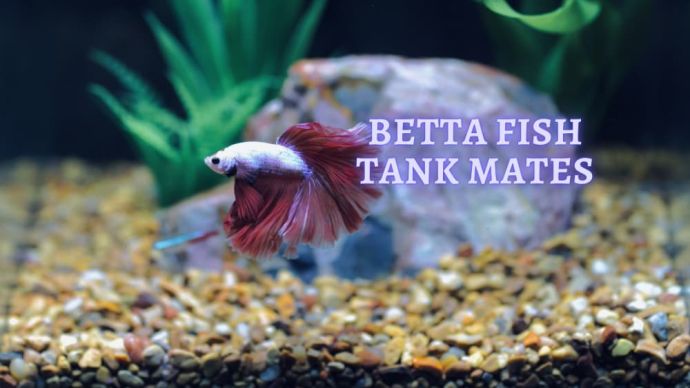What to Feed Betta Fish: The Best Betta Fish Foods
Written by:
Author: Alina Andreeva
Alina A. is a professional writer, editor, and pet-lover. She has published over 50 articles on how to care for pets properly. Alina has been writing articles for 3 years, so she has considerable experience in this niche. Her natural curiosity helps her to expand her knowledge and learn new pet care life hacks, which will make your life much easier.
View all 79 articlesLearn about our editorial process and veterinary review board.
Viewed: 342
Updated on: 03/10/2023
If you wonder what betta fish, or Siamese fighting fish, eat, how much, and how often you have come to the right place. Many beginning betta fish hobbyists ask these questions, and overfeeding is very common!
Betta can be particular about what he eats and prefers eating food on the water’s surface rather than at the aquarium’s bottom. These aquatic creatures require complete and balanced nutrition rich in protein because they are carnivores.
To keep your scaly sidekick in good condition, follow all our tips to keep your fish healthy and live long.
Diet Requirements
The Betta is a carnivorous animal that hunts insects and larvae in the wild. [1] However, it may only be possible for some Betta owners to provide their pet fish with live foods. You can feed a variety of flakes, pellets, freeze-dried, frozen, and live foods. Your pet food should be natural and contain protein as the main ingredient. Do not buy food for goldfish or other tropical fish.
Bettas cannot digest additives like corn and wheat. They are often found in many flakes and pellets and can cause excessive bloating or digestive problems. Betta gets no nutritional value from additives, and the fish body removes them as waste. Significantly, you feed high-protein foods to meet their predatory needs. Moisture and fiber are also helpful for their digestion.
Pellets
Pellets are the most common betta fish food on the market, and the quality of each varies greatly. The best pellets will contain fewer additives and more quality ingredients, and some pellets swell significantly on wetting.
It can cause bloating and digestive problems if you are not careful, as they will swell in your pet fish’s belly. For granules that expand after getting wet, soak them in the aquarium water before feeding wildly if your finned friend rushes for food.
Freeze-dried foods
Freeze-dried food is a good choice for betta fish but cannot fully replace live or frozen. Freeze-dried foods are devoid of moisture and have additives to keep them stable.
Soak them in the aquarium water before feeding to increase the moisture content. Freeze-dried feeding alone can lead to bloating and constipation.
One of the significant advantages is that they don’t have bacteria and parasites. You can find these types at local pet stores, and they will not put a dent in your wallet.
Flakes
There are flakes formulated especially for bettas. Please do not give your scaly sidekick flakes made for other tropical fish because they lack the protein Betta needs. Flakes can be the leading food for your finned buddy, but they can also make a mess. You should remove excess flakes immediately after you finished feed your betta fish. Also, there are cases when betta refuses to eat flakes.
Live and freeze-dried food
If your finned buddy has never tried anything other than pellets, he hasn’t lived! Bettas are carnivore creatures, and during feedings, they become aggressive when they have to chase their prey. By giving them live food, you reproduce their natural habitat.
Some are more difficult to obtain than others, but they provide complete and balanced nutrition. Remember that live and frozen food can pass various diseases onto your pet fish or carry parasites, so buy such fish food at trusted stores. Never give your scaly sidekick anything you caught outdoors.
Frozen is an excellent alternative to storing live foods. Please keep it in your freezer until you are ready to defrost, and give it to your betta. Take as much as you need, putting the rest back in the freezer.
READ MORE: Betta Fish Tank Mates
Favorite live and frozen foods
1. Mosquito Larvae
While it can be challenging to find them in winter, mosquito larvae are abundant in spring and summer. You can buy a starter culture, harvest them on your own, or find a trusted local or online store that sells them.
2. Brine Shrimp
Brine shrimp contain all the essential nutrients needed for bettas. You can grow them quickly or buy them online or at local fish stores. These aquatic creatures are an excellent option for varying your pet fish’s diet.
3. Bloodworms
Bloodworms can be found in water ponds, and Betta usually eats them in the wild, making them ideal treats for the most finicky eaters. These underwater creatures shouldn’t be used as the only food source because they don’t have amino acids. They are packed with a lot of iron and bright red. Also, you can find them in a freeze-dried or gel option.
4. Wingless Fruit Flies
Betta fish like to gorge on fruit flies because they are insectivorous animals. While you can catch some of them for feeding your scaly friend, you don’t know what parasites or diseases they might carry. Instead, there are flightless species perfect for feeding bettas and can even be bred in a small container.
5. Mysis Shrimp
Mysis shrimp are a good choice for bettas due to their exoskeleton. They are rich in fiber, which helps with the digestion of protein. If your aquatic friend is a finicky eater, these underwater creatures can help with food variety. They come with amino acids and Betta-loving nutrients. [2]
READ MORE: Best Shrimps for Freshwater Aquarium
What Can Betta Fish Eat of Human Food?
Any food you give to your scaly sidekick should be a rare treat – it should never make up your fish’s daily meal. While your betta is your pet, it is also a live creature with particular nutritional needs. Most human foods are not suitable for feeding betta fish. You can cut out any processed foods like sausages. Various chemicals and preservatives will not provide your pet fish with the nutrients they need and can cause serious illness.
Below are some of the human foods you can give to your betta fish:
- Bettas can eat boiled peas without shells. Remember to peel off the skin as it is hard for them to digest. Boiled peas promote better digestion of your pet fish.
- Cucumbers are also appropriate for your finned buddy. They are packed with a lot of vitamins and are easily digested by Betta fish. Do not give them such food in large quantities, and be sure to cut cucumbers into small pieces.
- Boiled spinach also makes a good source of food. Some bettas don’t like it, while others do. First, you need to boil it, as it can be hard for your pet fish to digest.
- Betta will gladly eat boiled corn seeds, which are also a rich source of energy. Make sure corn contains all of the key nutrients. You can give it to your fish as an occasional treat.
- Betta fish can be fed small amounts of meats such as beef, chicken, and pork. Do not forget to boil the meat and do not add any spices. The only downside to meat is that it is often made with antibiotics and steroids, which may be harmful to the betta.
- They can also gorge on seafood and some fish pieces. Shrimp, scallops, and other aquatic creatures are no doubt excellent sources as well. Gained from animals, such meats can replace betta’s food.
- You can also feed canned tuna, but make sure it contains no fat or oil. Fatty foods are not the best options for your betta and will not positively affect water quality.
- Never give citrus fruits to your scaly sidekick. Their digestive tract cannot cope with acids.
- You can give a small piece of unsalted cookie to your pet fish from time to time; it is not suggested due to fillers.
- In rare cases, you can offer your finned buddy a very small piece of mango. Keep in mind if your betta refuses to eat the mango within 30 minutes, then you should remove it from the aquarium; otherwise, your pet fish may die. Mango can be a good treat for bettas but can be fatal to the aquarium if left for a long time.
Foods That Improve the Color
Read more: Saltwater Fish For Beginners
The betta fish is famous for its bright and beautiful colors. But there are cases when they can fade or lose their vibrant color. Do you want your betta fish to improve its color? This is possible because food may affect it.
The staple food should be of high quality. You can also give natural food rich in pigments to your scaly sidekick twice a week – it can significantly improve its color. Below are live foods and natural treats you can add to your betta’s diet.
Shrimp shells
These are natural and made from crustaceans. They are packed with astaxanthin, a substance that is red in color and similar to carotene. Astaxanthin improves the color, especially red and pink. Also, this substance contributes to promoting pink color in salmon and some crustacean-eating birds such as flamingos. Apart from intensifying color, astaxanthin has other advantages for the betta fish since it contains antioxidants. They help to protect fish from cell aging.
Daphnia
These aquatic creatures are excellent food supplements for the aqauarium. Daphnias are micro-freshwater crustaceans that betta eat as live food. To promote the color of your finned buddy, it should swallow daphnia alive, adding them to your aquarium. The remaining daphnis are not harmful, as they help filter the tank water.
Artemia
These small pink crustaceans are a good protein source. They also intensify the color.
Mosquito Larva
These aquatic creatures can be a good portion of live food. Red mosquito larvae round up your betta’s nutritional needs and improve its color.
READ MORE: Best Betta Tanks
The Bottom Line
It is our responsibility as betta lovers to make sure they have complete and balanced nutrition. The best betta food is pellets, flakes, live, frozen, and freeze-dried. Feeding a variety of foods will give betta fish all the necessary nutrients they need to stay healthy.
FAQ
How Many Pellets Should I Feed My Betta?
Two-four pellets twice per day is a good amount for feeding Siamese fighting fish.[3] This measurement depends on fish food manufacturers to produce different sizes of pellets. If you are unsure, aim for 1.8 grams (for a grown-up fish).
Young fish need fewer pellets, older ones more. When they reach the end of their lives, some Betta fish will eat less, so do not put too many pellets in the tank if they are do not want to eat them. The fish will overeat, or the pellets will sink to the tank bottom and generate excess waste.
How Much Live Food Should I Feed ?
As previously mentioned, betta are carnivorous animals. They gorge on underwater insects in the wild, making live food one of the best choices for them.
When feeding your pet fish, try to give two-three pieces of live food one-two times a day or about 1.8 grams daily.[3]
How Often to Feed Bettas?
Grown-up Betta fish can be fed once a day, while young ones can be fed twice a day. It may seem like this is not enough, but many granules expand more than two times when they get wet. Pay attention that the stomach of your fish is roughly the size of their eye! Extra feedings may be required depending on the personality of your betta.
Betta can overeat if you let them. Overfeeding can lead to bloating, digestive problems, and even death. If you wonder how long a betta can live without food, it is approximately 14 days. It is always better not to feed them for a day or two than to overfeed them.
Article Sources:
- “Your Betta Needs More Than a Bowl – Veterinary Medicine at Illinois.” University of Illinois College of Veterinary Medicine, 16 Dec. 2020, vetmed.illinois.edu/pet_column/betta-fish/.
- “Best Betta Fish Food | What to Feed & How Much.” Bettafish, 6 Dec. 2020, bettafish.org/care/food-feeding/.
- “What Should I Feed My Siamese Fighting Fish?” RSPCA, kb.rspca.org.au/knowledge-base/what-should-i-feed-my-siamese-fighting-fish/.
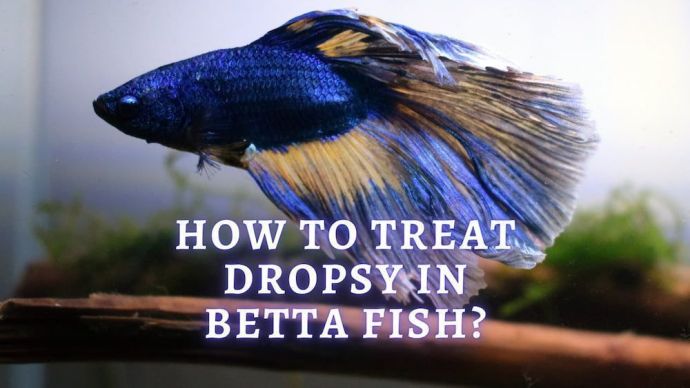 Freshwater Fish How to Treat Dropsy in Betta Fish? Recognizing Signs of Dropsy and Treat it In Time
Freshwater Fish How to Treat Dropsy in Betta Fish? Recognizing Signs of Dropsy and Treat it In Time - 55
- 0
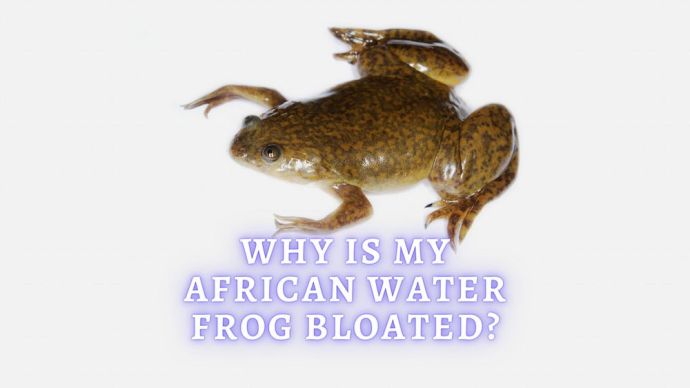 Freshwater Fish African Clawed Frog Bloat: Why Is My African Clawed Frog Bloated?
Freshwater Fish African Clawed Frog Bloat: Why Is My African Clawed Frog Bloated? - 62
- 0









